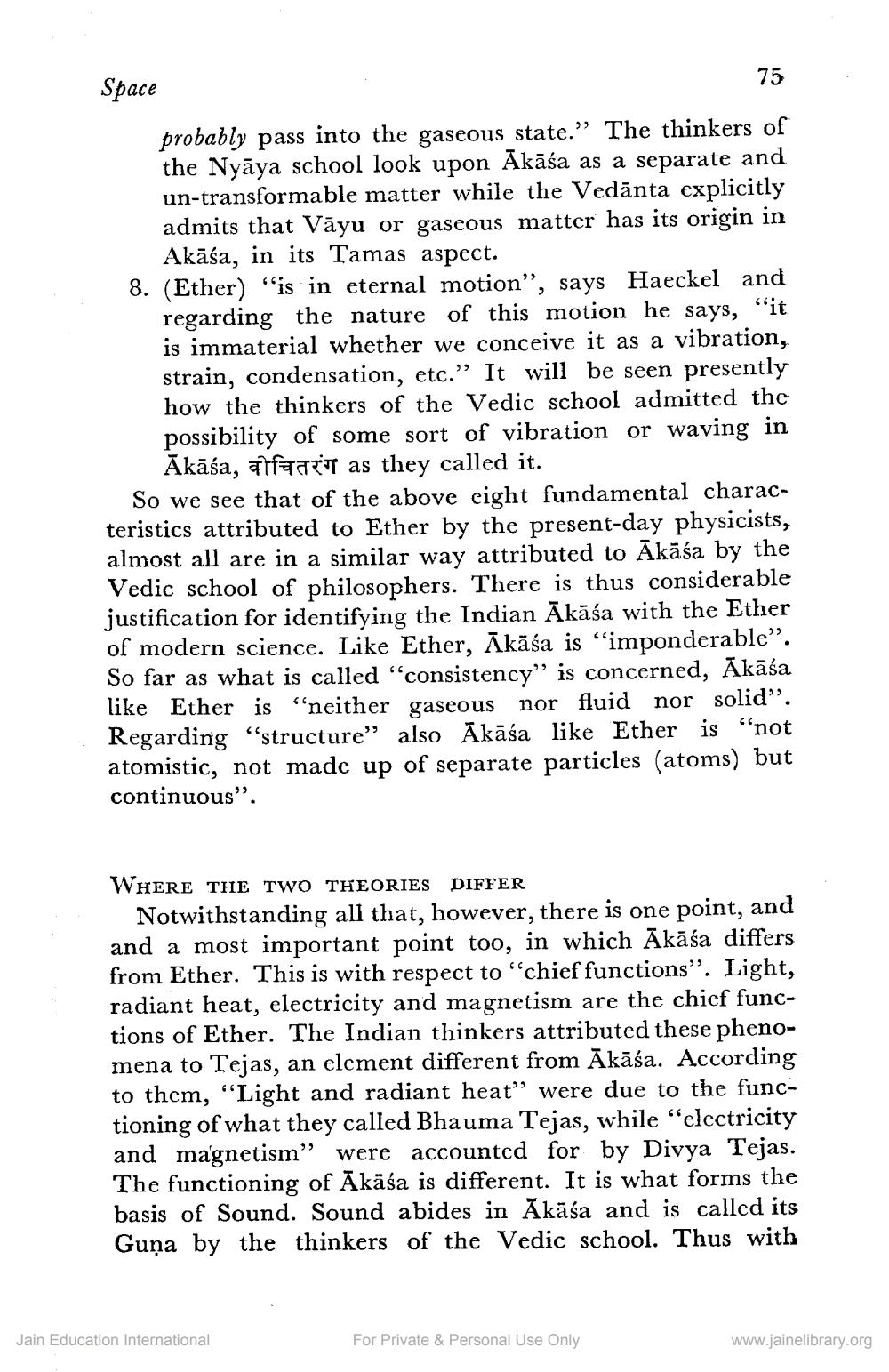________________
Space
75
probably pass into the gaseous state.” The thinkers of the Nyāya school look upon Akāśa as a separate and un-transformable matter while the Vedānta explicitly admits that Vãyu or gaseous matter has its origin in
Akāśa, in its Tamas aspect. 8. (Ether) "is in eternal motion”, says Haeckel and
regarding the nature of this motion he says, “it is immaterial whether we conceive it as a vibration, strain, condensation, etc.” It will be seen presently how the thinkers of the Vedic school admitted the possibility of some sort of vibration or waving in
Ākāśa, afatit as they called it. So we see that of the above eight fundamental characteristics attributed to Ether by the present-day physicists, almost all are in a similar way attributed to Ākāśa by the Vedic school of philosophers. There is thus considerable justification for identifying the Indian Ākāśa with the Ether of modern science. Like Ether, Ākāśa is "imponderable". So far as what is called “consistency” is concerned, Akāśa like Ether is "neither gaseous nor fluid nor solid”. Regarding "structure” also Ākāśa like Ether is not atomistic, not made up of separate particles (atoms) but continuous".
WHERE THE TWO THEORIES DIFFER
Notwithstanding all that, however, there is one point, and and a most important point too, in which Ākāśa differs from Ether. This is with respect to "chief functions”. Light, radiant heat, electricity and magnetism are the chief functions of Ether. The Indian thinkers attributed these phenomena to Tejas, an element different from Ākāśa. According to them, “Light and radiant heat” were due to the functioning of what they called Bhauma Tejas, while "electricity and magnetism” were accounted for by Divya Tejas. The functioning of Akāśa is different. It is what forms the basis of Sound. Sound abides in Ākāśa and is called its Guņa by the thinkers of the Vedic school. Thus with
Jain Education International
For Private & Personal Use Only
www.jainelibrary.org




